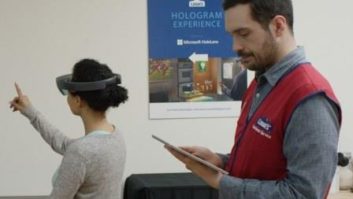
2018 remains a highly consequential year for traditional brick-and-mortar retail, especially as experts believe the number of store closings will rise from 2017.
Last year alone, retail closings hit a record high, more than tripling the amount of store closing announcements to 7,000, according to Fung Global Retail and Technology. Moving forward, in this Brave New World of retail, merchants must be savvy and efficient when making staffing decisions to better meet the needs of consumers, while also protecting their bottom lines.
See: Lights Out For Retail Giants
Many retailers are still struggling to support their staffs while meeting the constantly evolving needs of consumers. Retailers today must be smart with the technology tools they employ to aid both their staff and customers. To remain relevant, retailers ultimately need to maximize efficiency, save money and produce big productivity gains against the domino effect of laid-off employees and store closures.
Empower Employees With Tech Tools
Let’s start by saying that technology should not replace human employees. A store associate holds many roles such as stocking and restocking shelves, assembling and moving displays and, most importantly, facilitating sales by aiding customers. By providing store associates with tools like a handheld device with digital store layouts and product information, retailers will better equip employees to more efficiently perform day-to-day tasks and meet customers’ needs.
Here are a few ways retailers can use in-store technology to aid a shrinking workforce — allowing associates to work smarter, not harder:
- Incorporate an in-store map: Maps provide a foundation and a frame of reference for organizing data. But because retail store layouts are in a constant state of flux, the maps must be maintained to keep in sync with the daily changes. Stores optimize assortments, see inventory consumed and prep for fluctuating merchandising strategies. To keep up with the rate of in-store change, retail mapping solutions need to operate at scale.
- Know your product (location): Retailers use a variety of methods to aggregate products and locations that serve legacy business needs, but these methods leave gaps in the shopper experience and ultimately impede accurate analytics and insights. Because many retailers’ data is unpolished and unorganized, they are often missing key sales opportunities due to inconsistent product abbreviations. This makes searching for a specific product very difficult. Another gap is in the completeness of the data. Usually, retailers have a catalog of items available online but not in-store, which is again, bad for locating an item using search. If an in-store shopper searches via mobile app, but doesn’t see it, it’s a lost sale. To cut back on lost sales and avoid falling short, retailers need solutions that accurately represent 100 percent of the products within physical store.
- Chatbots: One tech solution retailers should leverage to gain insight into their shoppers is chatbots. Chatbots enable a retailer to open a new channel with the shopper. A store associate can use the bot to redirect a response to the shopper’s phone, if they desire. By doing so, store associates are playing a key role in unifying the physical and digital shopping experience — making them more efficient in their roles. Additionally, chatbots can cut costs, as big retailers typically rely on multiple associates on the store floor at any given time with the sole task of answering basic customer questions. More ways to get customer questions answered means fewer employees are needed out front.
But Won’t Customer Service Suffer?
Customer experience can’t be one-size-fits-all, and a great experience certainly can’t be achieved without actually listening to your customers. Retailers and store associates have to be prepared to meet a consumer’s need in real-time with accurate information to keep their doors open.
As the landscape of a store (and the retail market) changes, retailers must be prepared to empower employees through knowledge. This will give employees more meaningful roles that will ultimately result in a more meaningful experience for the consumer. This approach increases efficiency while driving down costs. Thus, retailers will no longer throw away sales by ineffectively organizing data, but achieve a higher level of productivity with their associates.
Jon Croy is co-founder and chief marketing officer at Point Inside, a leading provider of digital mapping and indoor location-based services for top retailers. Its complete Cloud-based solution helps bring brick-and-mortar stores into the digital world.












